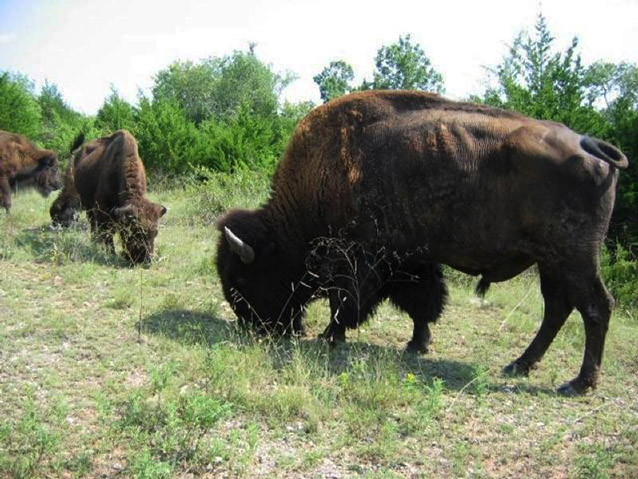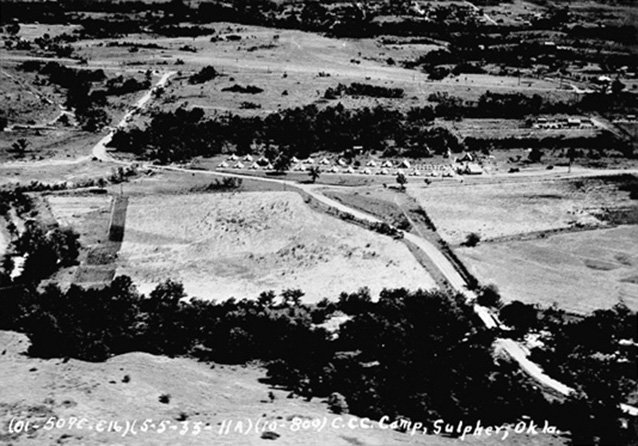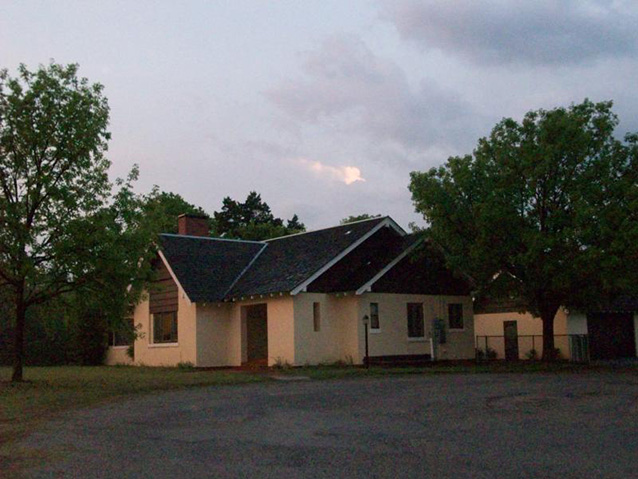The Buffalo Pasture and Prairie Uplands is a 392-acre landscape in the central portion of the Platt National Park National Historic Landmark District, part of Oklahoma's Chickasaw National Recreation Area. Although this area is not as highly used as some other areas of the park, the landscape exbihits a special character and provides a unique experience for park visitors.
The area is a large, natural setting which provided a backdrop for the rest of the rustic style elements designed throughout the park. The herd is descended from the original group of bison first obtained by the park in 1920.

NPS
In general, the area is primarily a natural landscape, with few visitor facilities. The landscape mainly consists of upland prairie habitat dominated by short lobed oak and prairie plants. The Superintendent’s Residence is one of the few structures located in the landscape. Another prominent feature is the Buffalo Pasture, which is a fenced pasture for the park's herd of six bison. Visitors may view the buffalo from a parking area and overlook or from the trail which runs along the pasture fence.

NPS / CHIC Archives
The Buffalo Pasture and Prairie Upland landscape is significant for its association with the former Platt National Park (a National Historic Landmark District), within what is now Chickasaw National Recreation Area. The district is important for its association with the development of national park landscapes completed during the Great Depression and funded as part of Franklin Delano Roosevelt’s “New Deal” programs.
The district is also significant for embodying the characteristics of the type, period, and methods of construction typical of the “rustic style” of park design developed by the National Park Service in the years between World War I and World War II (1916-1942) under the leadership of Thomas Vint.
In general terms, Rustic park design limited development to preserve natural scenery, and buildings and structures were designed in harmony with the natural landscape. This meant using hand craftsmanship, local architectural styles and natural materials such as stone, wood, and native plants in the design of each park structure or element.

NPS
As part of the former Platt National Park, the Buffalo Pasture and Prairie Upland area was a large, natural setting which provided a backdrop for the rest of the rustic style elements designed throughout the park. The area was designed as a space for park facilities not oriented to camping, water enjoyment, or high visitor usage.
Today, the area is still important as a repository of early park history, as exemplified by the buffalo herd, which has been a feature in the park since 1920. The area also contains a number of rustic features constructed between 1933 and 1940, including the Superintendent’s Residence.
Quick Facts
- Cultural Landscape Type: Designed
- National Register Significance Level: National
- National Register Significance Criteria: A, C
- National Historic Landmark
- Period of Significance: 1933-1940
Landscape Links
Part of a series of articles titled Cultural Landscapes of Chickasaw National Recreation Area.
Last updated: December 30, 2019
